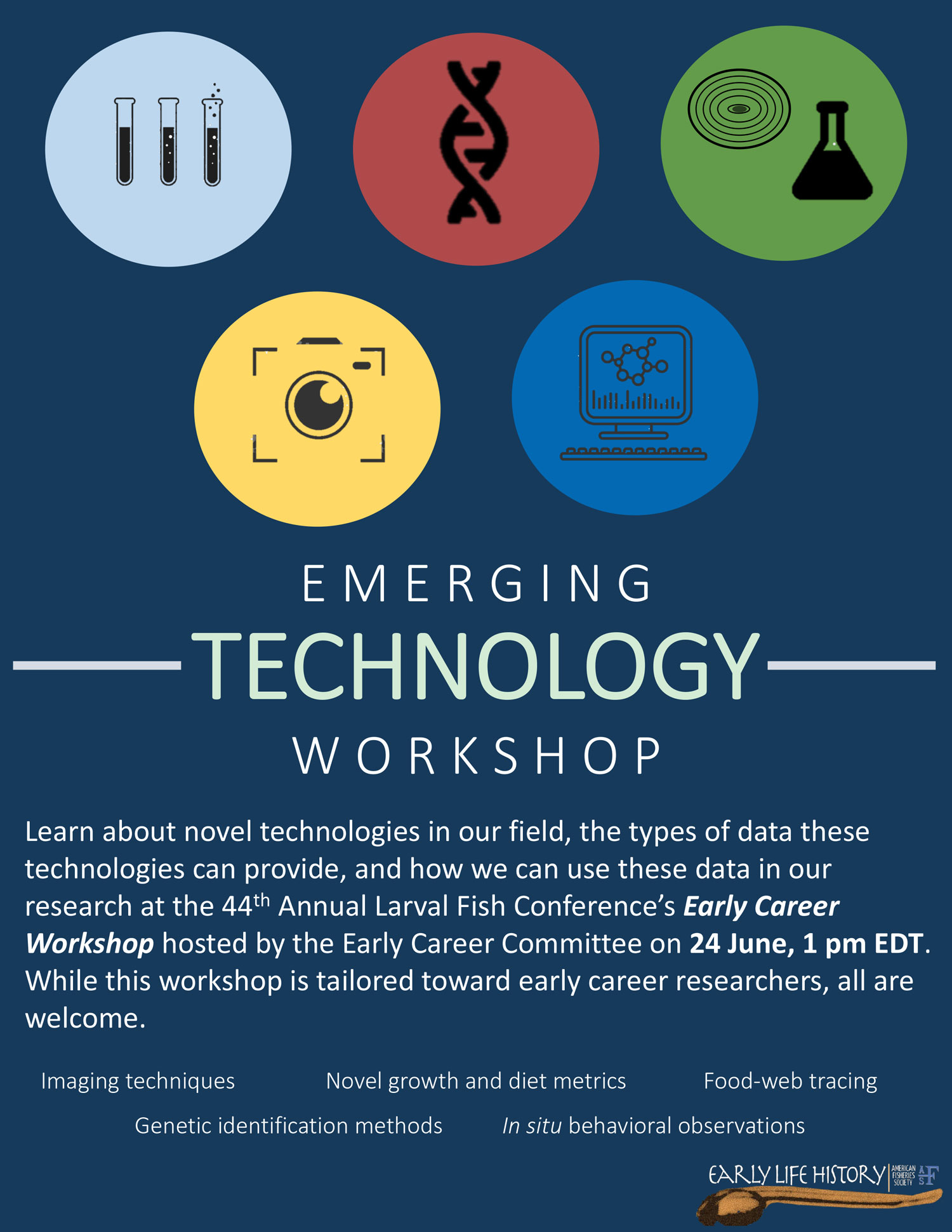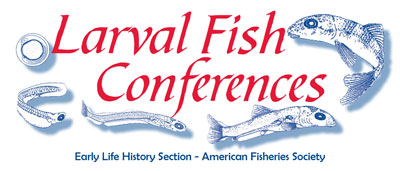If you're not sure when an event starts at your time zone, look at this table or check with worldtimebuddy.com
Wednesday, June 23rd 2021
Pre-conference mixer: 14:00 - 16:00 and 18:00 - 20:00
Pre-conference mixers on Gatherly!

2 x 2 hours: 14:00 - 16:00 and 18:00 - 20:00 (same Gatherly link)
Come and meet old and new colleagues from around the world in the pre-conference mixer on Gatherly. The networking platform is ideal for spontaneous meetings, like the one you would do with a colleague you meet on the eve of a 'normal' conference. Your 'avatar' symbol lands in the Welcome Area and then you can then explore different floors and join colleagues and "huddles" for video-chats. Not sure, who will attend? Look for registered participants at the "Who will attend the LFC44?" tab.
LFC44 strongly advises to read our Meeting on Gatherly guidelines before, to hopefully give everyone a satisfactory experience. You need to use Google Chrome as your browser for this. You should probably be where your best LAN/W-LAN connection is. Gatherly does not currently support phones or tablets. We strongly recommend using a screen of at least 11" size (laptop).
Session 1 Thu 11:00 - 13:00 (EDT) | WebEx meeting number: 120 386 5220 | Join
11:15 | Keynote 1 – Su Sponaugle | “Field of Dreams: Maximizing the Value of Ichthyoplankton Datasets”
Long-term ichthyoplankton datasets exist around the globe either as dedicated routine sampling efforts funded through government agencies or as series of independent-PI sampling programs conducted in common geographic areas. These datasets have been used to address ecological and oceanographic questions that have provided valuable data for forecasting and managing global fisheries. However, funds for and logistics of maintaining such programs are daunting. Further, sampling design, continuity of methodology, sample preservation, metadata associated with data archiving, and open access to written, digital, and biological data are essential components of a useful dataset. In this era of global climate change, long-term datasets are especially useful for the examination of process-oriented questions. Initiating, continuing, or collaborating to use a long-term dataset is possible with creative approaches. All of us should look to the future and prepare our field to generate data critical to advancing our knowledge of fisheries ecology in a changing ocean.
11:45 | RP01 – Raphael Lagarde | Phenology and environmental drivers of glass eels recruitment in a Mediterranean lagoon
- Theme: Recruitment processes
- Authors: Raphael Lagarde*, Jason Peyre, Elsa Amilhat, Francois Bourrin, Alexandre Perrault, Gal Simon, Elisabeth Faliex
- Title: Phenology and environmental drivers of glass eels recruitment in a Mediterranean lagoon
European eel, Anguilla anguilla, is an emblematic diadromous species which population has dropped since 1980. Although Mediterranean lagoons represent productive brackish ecosystems, particularly important for eel, knowledge of eel ecology in Mediterranean lagoons is not as developed as it is in rivers. Particularly, data on glass eels recruitment to the lagoons are scares. To address this lack of data, recruitment was monitored daily during 647 days from December 2018 to march 2021 using passive traps in Bages-Sigean lagoon. Simultaneously, environmental drivers were measured at the sampling site (turbidity, flow velocity, temperature) or at the closest meteorological stations (rainfalls, wind, atmospheric pressure, cloud cover). Recruitment was highly variable with an annual peak of abundances occurring between November and March. This work highlights that the discharge of the main tributary of the lagoon mainly influenced glass eel recruitment, enabling us to identify key periods when anthropogenic activities should be limited.
12:00 | RP02 – Christoffer Nagel | Fish larvae drift in regulated large alpine rivers- a case study from the River Inn
- Theme: Recruitment processes
- Authors: Christoffer Nagel*, Melanie Mueller, Joachim Pander, Bernhard C. Stoeckle, Ralph Kuehn & Juergen Geist
- Title: Fish larvae drift in regulated large alpine rivers- a case study from the River Inn
12:15 | RP03 – Arild Folkvord | Liver condition of 0 and 1-group cod (Gadus morhua) in the Barents Sea
- Theme: Recruitment processes
- Authors: Oyvind Langnes, Elena Eriksen, Arild Folkvord*
- Title: Liver condition of 0 and 1-group cod (Gadus morhua) in the Barents Sea
12:30 | RP04 – Anna Akimova | Physiological modelling helps pinpoint processes contributing to the recent recruitment failure of North Sea herring
- Theme: Recruitment processes
- Authors: Anna Akimova, Gregor Boerner, Cindy van Damme, Myron A. Peck, Marta Moyano
- Title: Physiological modelling helps pinpoint processes contributing to the recent recruitment failure of North Sea herring
12:45 | RP14 – Vania Baptista | Personality in a temperate pelagic fish larva may affect recruitment in nursery habitats
- Theme: Recruitment processes
- Authors: V. Baptista*, Claudio Carere, Pedro Morais, Joana Cruz, Francisco Leitao, Maria Alexandra Teodesio
- Title: Personality in a temperate pelagic fish larva may affect recruitment in nursery habitats
Early Career Workshop "Emerging Technologies" WebEx: Thu 13:00 - 14:15 (EDT) | WebEx meeting number: 120 386 5220 | Join
Session 2 | Thu 14:15 - 15:45 (EDT) | WebEx meeting number: 120 386 5220 | Join
14:15 | LA01 – Sinan Mavruk | Spatial, intra and interannual changes of summer larvalfish assemblages and influence of environmental conditions in Antalya Bay, North-Eastern Mediterranean
- Theme: Larval Assemblages
- Authors: Sinan Mavruk*, Cihan Toslak, Fatma Banu Yalim, Ozgur Aktas, Fethi Bengil, Meltem Ok, Ahsen Yuksek
- Title: Spatial, intra and interannual changes of summer larvalfish assemblages and influence of environmental conditions in Antalya Bay, North-Eastern Mediterranean
14:30 | LA02 – Stacy Provo | Distribution of Larval Coregonines in Southern Lake Erie
- Theme: Larval Assemblages
- Authors: Stacy Provo, April Simmons, Robin DeBruyne, Hannah Schaefer, Dimitry Gorsky, Brendan Nee, Stacey Ireland, and Edward Roseman
- Title: Distribution of Larval Coregonines in Southern Lake Erie
14:45 | LA03 – Gonzalo Dauden | Comparison of ichthyoplankton with contrasting life histories as function of oceanographic variables in the GoM
- Theme: Larval Assemblages
- Authors: Dauden-Bengoa G*, Jiminez-Rosenberg SPA, Fernandez-Alamo MA, Ordoez-Lopez U, Echeverri-Garcia, LP, Herzka SZ
- Title: Comparison of ichthyoplankton with contrasting life histories as function of oceanographic variables in the GoM
15:00 | FF01 – Thornton Ritz | Understanding larval development of burbot (Lota lota) and its role in their persistence throughout North America
- Theme: Form, function, development
- Authors: Thornton Ritz* and Jill B.K. Leonard
- Title: Understanding larval development of burbot (Lota lota) and its role in their persistence throughout North America
15:15 | FF02 – Aubree Jones | Larval Period Duration and the Timing of Lateral Line Development in Brook Trout (Salvelinus fontinalis)
- Theme: Form, function, development
- Authors: Aubree E. Jones*, Matthew J. O'Donnell, Amy M. Regish, Jacqueline F. Webb
- Title: Larval Period Duration and the Timing of Lateral Line Development in Brook Trout (Salvelinus fontinalis)
15:30 | FF03 – Erica Mason | Uncoding comparable morphologies: Using genetics, morphological traits, and machine learning to calibrate classification
- Theme: Form, function, development
- Authors: E.T. Mason*, L. Buckeley, A.C. Salazar Sawkins, A.R. Thompson, W. Watson, and B.X. Semmens
- Title: Uncoding comparable morphologies: Using genetics, morphological traits, and machine learning to calibrate classification
Session 3 | Thu 18:00 - 19:15 (EDT) | WebEx meeting number: 120 386 5220 | Join
18:15 | RP06 – Kelsey Swieca | Oceanographic and trophodynamic underpinnings of anchovy success in the northern California Current
- Theme: Recruitment processes
- Authors: Kelsey Swieca*, Su Sponaugle, Mortiz Schmid, Robert K. Cowen
- Title: Oceanographic and trophodynamic underpinnings of anchovy success in the northern California Current
18:30 | RP07 – Rasmus Swalethorp | Trophic shifts in larval diet explains booms and busts of Northern Anchovy
- Theme: Recruitment processes
- Authors: Rasmus Swalethorp*, Michael R. Landry, Brice X. Semmens, Lihini Aluwihare, Dereka Chargualaf, Andrew R. Thompson
- Title: Trophic shifts in larval diet explains booms and busts of Northern Anchovy
18:45 | RP08 – Megan Wilson | Tortoise and Hare: distinct early growth strategies in a groundfish persist in a seasonally variable environment
- Theme: Recruitment processes
- Authors: Megan N. Wilson*, Kirsten Grorud-Colvert, Su Sponaugle
- Title: Tortoise and Hare: distinct early growth strategies in a groundfish persist in a seasonally variable environment
19:00 | RP09 – Jess Hopf | Larval recruitment variability and sampling design interact to influence the detectability of marine reserve effects
- Theme: Recruitment processes
- Authors: Jess Hopf
- Title: Larval recruitment variability and sampling design interact to influence the detectability of marine reserve effects
Poster Session 1 and Meet todays Speakers | Gatherly: 19:30 - 22:00
Poster session and ‘Meet today’s speakers’ on Gatherly! – click to expand and see the poster titles
Come and meet Thursdays poster presenters and speakers on Gatherly. The networking platform is ideal for asking questions informally, like you would do during a poster session or reception during a 'normal' conference. Your 'avatar' symbol lands in the Welcome Area and you can then explore different floors and join colleagues and "huddles" for video-chats. Not sure, who will attend? Look for registered participants at the "Who will attend the LFC44?" tab.
LFC44 strongly advises to read our Meeting on Gatherly guidelines before, to hopefully give everyone a satisfactory experience. You need to use Google Chrome as your browser for this. You should probably be where your best LAN/W-LAN connection is. Gatherly does not currently support phones or tablets. We strongly recommend using a screen of at least 11" size (laptop).
Poster presenters at the Poster session I
Session 4 | Fri 11:15 - 12:15 (EDT) | WebEx meeting number: 120 302 5367 | Join
11:15 | FF04 – Michaela Kolker | Accelerating morphological disparity during ontogeny leads to two convergent morphotypes in the three-spine stickleback
- Theme: Form, function, development
- Authors: Michaela Kolker*, Ken Thompson, Asli Munzur, Prof. Dolph Schluter, Prof. Shai Meiri, Prof. Roi Holzman
- Title: Accelerating morphological disparity during ontogeny leads to two convergent morphotypes in the three-spine stickleback
11:30 | FF05 – A. Ladino | Using ultrasound for the monitoring and control of larval development of gilthead seabream (Sparus aurata) in tanks
- Theme: Form, function, development
- Authors: V. Puig-Pons, A. Ladino* , V. Espinosa , I. Perez-Arjona , A. Ortega, F. de la Gandara
- Title: Using ultrasound for the monitoring and control of larval development of gilthead seabream (Sparus aurata) in tanks.
11:45 | FF06 – Todd Clardy | Ontogeny of the feeding apparatus of the White Croaker, Genyonemus lineatus (Sciaenidae)
- Theme: Form, function, development
- Authors: Todd R. Clardy*, Alison L. Deary
- Title: Ontogeny of the feeding apparatus of the White Croaker, Genyonemus lineatus (Sciaenidae)
12:00 | FF07 – Zhenxin Hou | Incorporation of Dietary Lipid and Fatty Acids into Red Drum Sciaenops ocellatus Eggs
- Theme: Form, function, development
- Authors: Zhenxin Hou*, Lee A. Fuiman
- Title: Incorporation of Dietary Lipid and Fatty Acids into Red Drum Sciaenops ocellatus Eggs
Session 5 | Fri 12:30 - 15:00 (EDT) | WebEx meeting number: 120 302 5367 | Join
12:30 | FF08 – Fanny Rioual | Captive rearing of Peruvian anchovy (Engraulis ringens): Early development and growth modelling
- Theme: Form, function, development
- Authors: Fanny Rioual*, Claudia Ofelio, Maryandrea Rosado-Salazar, Jhon Dionicio-Acedo, Myron A. Peck, Arturo Aguirre-Velarde
- Title: Captive rearing of Peruvian anchovy (Engraulis ringens): Early development and growth modelling
13:00 | FF10 – Monica Mai | Transgenerational acclimation of seabream (Sparus aurata) to ocean warming
- Theme: Form, function, development
- Authors: Monica G. Mai*, Maria Rita Pegado, Rui Rosa, Pedro Pouso-Ferreira, Ana Mendes, Marta S. Pimentel
- Title: Transgenerational acclimation of seabream (Sparus aurata) to ocean warming
12:45 | FF09 – Aina Pons Salom | Behavioral types correlate with gut microbiome in early-life stages of wild gilthead seabream
- Theme: Form, function, development
- Authors: A. Pons*; E. Aspillaga; R. Rosselli-Mora; T. Viver; M. Signaroli; J. Sanllehi; M. Martorell; M. Barceli; J. A.
- Title: Behavioral types correlate with gut microbiome in early-life stages of wild gilthead seabream
13:15 | FF11 – Olivia Lestrade | Microbial Communities of Sargassum and Associated Microplastics Influence Juvenile Gray Triggerfish Gut Microbiome
- Theme: Form, function, development
- Authors: Olivia Lestrade, Leila Hamdan, Anirban Ray, Robert Griffitt, and Frank J. Hernandez
- Title: Microbial Communities of Sargassum and Associated Microplastics Influence Juvenile Gray Triggerfish Gut Microbiome
13:45 | RP10 – Emilie Geissinger | Size, condition, and winter duration: Insights on winter survivorship of juvenile cod
- Theme: Recruitment processes
- Authors: Emilie A. Geissinger*; Chelsea R. Bloom; Robert S. Gregory; Benjamin J. Laurel, Paul V.R. Snelgrove
- Title: Size, condition, and winter duration: Insights on winter survivorship of juvenile cod
14:00 | RP11 – Robin DeBruyne | Distribution and Abundance of Pelagic Larval Yellow Perch in Lake St. Clair (US/Canada) and Adjoining Waters
- Theme: Recruitment processes
- Authors: Robin L. DeBruyne*, Taaja R. Tucker, Clara Lloyd, Andrew S. Briggs, Megan Belore, Edward F. Roseman
- Title: Distribution and Abundance of Pelagic Larval Yellow Perch in Lake St. Clair (US/Canada) and Adjoining Waters
14:15 | RP12 – Katelyn Cunningham | Changes in density and growth of larval lake whitefish after ecosystem changes in Lake Huron
- Theme: Recruitment processes
- Authors: Katelyn Cunningham* and Erin Dunlop
- Title: Changes in density and growth of larval lake whitefish after ecosystem changes in Lake Huron
14:30 | RP20 – Ghinter Leopold | A first glimpse into the larval ecology of halibut species in the Gulf of St. Lawrence, Canada
- Theme: Recruitment processes
- Authors: Ghinter Leopold*
- Title: A first glimpse into the larval ecology of halibut species in the Gulf of St. Lawrence, Canada
14:45 | RP05 – Virginia Garcia Alonso | So close yet so far? Assessing distribution and connectivity of Fuegian sprat early life stages in the SWAO
- Theme: Recruitment processes
- Authors: Virginia A. Garcia Alonso*, Barbara C. Franco, Vincent Combes, Elbio D. Palma, Marcelo Pagaro, Fabiana L. Capitanio
- Title: So close yet so far? Assessing distribution and connectivity of Fuegian sprat early life stages in the SWAO
Session 6 | Fri 12:30 - 15:00 (EDT) | WebEx meeting number: 120 659 4823 | Join
12:30 | LA04 – Gregor Boerner | The impact of the zooplankton size structure on foraging and growth of early herring larvae in the North Sea
- Theme: Larval Assemblages
- Authors: Gregor Boerner, Anna Akimova, Romain Frelat, Cindy van Damme, Myron A. Peck, Marta Moyano
- Title: The impact of the zooplankton size structure on foraging and growth of early herring larvae in the North Sea
12:45 | LA05 – Shannan McAskill | Trophic niche partitioning of three larval Sciaenidae species in the North-western Gulf of Mexico
- Theme: Larval Assemblages
- Authors: Shannan C McAskill, Stormy Paxton, Simon J Geist
- Title: Trophic niche partitioning of three larval Sciaenidae species in the North-western Gulf of Mexico
13:00 | LA06 – April Simmons | Comparison of larval and juvenile fish assemblage between newly created marsh terrace habitat and existing marsh habitat
- Theme: Larval Assemblages
- Authors: April E. Simmons*, Allyse Ferrara, Solomon David, Quenton Fontenot
- Title: Comparison of larval and juvenile fish assemblage between newly created marsh terrace habitat and existing marsh habitat
13:15 | LA07 – Jonathan Whitney | Ocean Oases: Surface slicks are pelagic nurseries for larval coral reef, epipelagic & deep-water fishes.
- Theme: Larval Assemblages
- Authors: Whitney JL*, Gove JM, McManus MA, Lecky J, Smith KS, Neubauer P, Phipps JE, Contreras EA, Kobayashi DR, Asner GP.
- Title: Ocean Oases: Surface slicks are pelagic nurseries for larval coral reef, epipelagic & deep-water fishes.
13:45 | AQ01 – Paul Anderson | A Framework for the Selection of Marine Aquarium Fishes to Target for Aquaculture
- Theme: Commercial & ornamental aquaculture
- Authors: Brogan E. Holcombe, Savannah Lilyhorn, Danielle M. Contrada, Jennifer C. Dawson, Sydney Dennis, and Paul A. Anderson*
- Title: A Framework for the Selection of Marine Aquarium Fishes to Target for Aquaculture
14:00 | AQ02 – Jessie Castanier | Public Aquariums as a Potential Source of Marine Fish for Exhibits and Conservation – Identification of Eggs and Larvae
- Theme: Commercial & ornamental aquaculture
- Authors: Jessie Castanier*, Andrew Fields, John Scarpa, Simon Geist, David Portnoy
- Title: Public Aquariums as a Potential Source of Marine Fish for Exhibits and Conservation - Identification of Eggs and Larvae
14:15 | AQ03 – Fabrice Teletchea | Comparative biology of early life stages of over 300 temperate freshwater fishes based on an updated STOREFISH database
- Theme: Commercial & ornamental aquaculture
- Authors: Venturelli, P*; Blevins, T; Hawkins, S; McCord, A; McDonald, Z; Minhinnett, S; Schwer, J; Teletchea, S; Teletchea, F*
- Title: Comparative biology of early life stages of over 300 temperate freshwater fishes based on an updated STOREFISH database
14:30 | AQ04 – Jeppe Rasmussen | FishSizer; A new software solution for efficiently sizing fish larva
- Theme: Commercial & ornamental aquaculture
- Authors: Jeppe Have Rasmussen*, Rebekah Alice Oomen, Marta Moyano
- Title: FishSizer; A new software solution for efficiently sizing fish larva.
14:45 | AQ11 – Prescilla Perrichon | Ontogenetic shift and lateralized swimming behavior in atlantic halibut (Hippoglossus hippoglossus)
- Theme: Commercial & ornamental aquaculture
- Authors: P. Perrichon*, A. Sae, T. Furmanek, T. Harboe, B. Norberg
- Title: Ontogenetic shift and lateralized swimming behavior in atlantic halibut (Hippoglossus hippoglossus)
Poster Session 2 and Meet todays Speakers | Gatherly: 15:00 - 16:00
Poster session 2 and ‘Meet today’s speakers’ on Gatherly! – click to expand and see the poster titles
Come and meet Fridays poster presenters and speakers on Gatherly. The networking platform is ideal for asking questions informally, like you would do during a poster session or reception during a 'normal' conference. Your 'avatar' symbol lands in the Welcome Area and can then explore different floors and join colleagues and "huddles" for video-chats. Not sure, who will attend? Look for registered participants at the "Who will attend the LFC44?" tab.
LFC44 strongly advises to read our Meeting on Gatherly guidelines before, to hopefully give everyone a satisfactory experience. You need to use Google Chrome as your browser for this. You should probably be where your best LAN/W-LAN connection is. Gatherly does not currently support phones or tablets. We strongly recommend using a screen of at least 11" size (laptop).
Poster presenters Session II:
Session 7 | Fri 18:00 - 20:00 (EDT) | WebEx meeting number: 120 302 5367 | Join
18:15 | Keynote 2 – Andrea Frommel | “Sweat the small stuff: How local conditions can shape the sensitivity to climate change”
Over the past years, research on impacts of climate change on fish larvae has progressed from experiments using single stressors and global averages to more complex designs, incorporating multiple stressors, fluctuating conditions and accounting for local variability. This talk will give an overview and highlight recent work incorporating local conditions and variability and show how it can advance our understanding of the vulnerability of larval fishes to climate change.
18:45 | CC02 – Connor McManus | Spatiotemporal patterns in early life stage winter flounder highlight phenology changes and habitat dependencies
- Theme: Climate change effects
- Authors: M. Conor McManus*, Joseph A. Langan, Richard J. Bell, Jeremy S. Collie, Grace Klein-MacPhee, Michael D. Scherer, Richard G. Balouskus
- Title: Spatiotemporal patterns in early life stage winter flounder highlight phenology changes and habitat dependencies
19:00 | CC01 – Darren Johnson | How ocean acidification may alter natural selection on larvae: A case study of California Grunion
- Theme: Climate change effects
- Authors: Johnson, D.W.
- Title: How ocean acidification may alter natural selection on larvae: A case study of California Grunion
19:15 | CC03 – Caroline Bouchard | Sailboats and fish larvae : a combo with the wind in their sails
- Theme: Climate change effects
- Authors: Caroline Bouchard
- Title: Sailboats and fish larvae : a combo with the wind in their sails
19:30 | FF12 – Marianne Nyegaard | A study of tiny shapeshifters: microCT scanning of a rare collection of Giant Sunfish larvae (Molidae, Mola alexandrini)
- Theme: Form, function, development
- Authors: Marianne Nyegaard* and Tom Trnski
- Title: A study of tiny shapeshifters: microCT scanning of a rare collection of Giant Sunfish larvae (Molidae, Mola alexandrini)
19:45 | FF13 – Goldyn Aquino | Movement of glass eel Anguilla marmorata (Anguilliformes: Anguillidae) exposed to different salinity levels
- Theme: Form, function, development
- Authors: Goldyn Anne G. Aquino*, Patrick C. Cabaitan, David H. Secor
- Title: Movement of glass eel Anguilla marmorata (Anguilliformes: Anguillidae) exposed to different salinity levels
Meet todays Speakers and Networking Hour with ELHS mentors | Gatherly: 20:00 - 22:00
‘Meet today’s speakers’ and Network Hour with ELHS mentors on Gatherly!
Come and meet Fridays speakers and Network Hour with ELHS mentors on Gatherly. The networking platform is ideal for asking questions informally, like you would do during a poster session or reception during a 'normal' conference. Your 'avatar' symbol lands in the Welcome Area and can then explore different floors and join colleagues and "huddles" for video-chats. Not sure, who will attend? Look for registered participants at the "Who will attend the LFC44?" tab.
LFC44 strongly advises to read our Meeting on Gatherly guidelines before, to hopefully give everyone a satisfactory experience. You need to use Google Chrome as your browser for this. You should probably be where your best LAN/W-LAN connection is. Gatherly does not currently support phones or tablets. We strongly recommend using a screen of at least 11" size (laptop).
Session 8 | Sat 11:00 - 14:30 (EDT) | WebEx meeting number: 120 659 1781 | Join
11:15 | Keynote 3 – Judy St.Leger | “Meeting Aquaculture needs with Research and Production”
11:45 | CC04 – Michael Sswat | Effect of upwelling intensity and light regime on larval fish growth: a mesocosm study in the Humboldt Current System
- Theme: Climate change effects
- Authors: M Sswat*, C Ofelio, S Goldenberg, A Aguirre Velarde, F Rioual, MA Peck, C Clemmesen, M Moyano, U Riebesell
- Title: Effect of upwelling intensity and light regime on larval fish growth: a mesocosm study in the Humboldt Current System
12:00 | CC05 – Marta Pimentel | Deleterious effects of the deadly trio (warming, acidification, and deoxygenation) on fish early ontogeny
- Theme: Climate change effects
- Authors: Marta S. Pimentel*, Catarina Santos, Maria Rita Pegado, Eduardo Sampaio, Pedro Pousao-Ferreira, Rui Rosa
- Title: Deleterious effects of the deadly trio (warming, acidification, and deoxygenation) on fish early ontogeny
12:15 | CC06 – Lea Joly | Can herring larvae cope with global changes (warming, acidification, food quality)? A multi-stressor experiments
- Theme: Climate change effects
- Authors: Lea J. Joly*, Jose-Luis Zambonino-Infante, Carolina Giraldo, Cedric L. Meunier
- Title: Can herring larvae cope with global changes (warming, acidification, food quality)? A multi-stressor experiments
12:30 | CC07 – Katarina Alter | Ocean acidification but not elevated spring warming threatens a European seas predator
- Theme: Climate change effects
- Authors: Katharina Alter* and Myron A. Peck
- Title: Ocean acidification but not elevated spring warming threatens a European seas predator
12:45 | CC08 – Claudia Ofelio | Effects of temperature and prey density on growth, otoliths and thermal tolerance of lab-reared Peruvian anchovy larvae
- Theme: Climate change effects
- Authors: Ofelio, C.*, Moyano M., Sswat, M., Rioual, F., Moullec, F., Aguirre-Velarde, A., Peck, M.A.
- Title: Effects of temperature and prey density on growth, otoliths and thermal tolerance of lab-reared Peruvian anchovy larvae
13:00 | CC09 – Ana Faria | Effects of acute and long-term exposure to warming on the escape response and aerobic scope of white seabream juveniles
- Theme: Climate change effects
- Authors: João Almeida, Ana R. Lopes, Ana F. Lopes, Laura Ribeiro, Ana M. Faria*
- Title: Effects of acute and long-term exposure to warming on the escape response and aerobic scope of white seabream juveniles
13:30 | FF14 – Ralf Schneider | Comparative analysis of the embryogenesis of three syngnathids provides insights into the development of these fishes
- Theme: Form, function, development
- Authors: Ralf Friedrich Schneider*, Joost M Woltering, Dominique Adriaens, Olivia Roth
- Title: Comparative analysis of the embryogenesis of three syngnathids provides insights into the development of these fishes
13:45 | FF15 – Philipp Thieme | Caudal-fin skeleton of atherinomorphs: Development reveals Convergences
- Theme: Form, function, development
- Authors: Thieme, Philipp*
- Title: Caudal-fin skeleton of atherinomorphs: Development reveals Convergences
14:00 | RP19 – Madeline Tomczak | Retention and Collection Efficiency of Egg Mats
- Theme: Recruitment processes
- Authors: Madeline Tomczak*, Brian Schmidt, Robin L. DeBruyne, Dustin Bowser, Jason L. Fischer, Gregory W. Kennedy, Nicole King, Christine M. Mayer, Edward F. Roseman
- Title: Retention and Collection Efficiency of Egg Mats
14:15 | RP13 – Corinne Burns | Identifying Physical Oceanographic Variables Driving Larval Redfish (Sebastes sp.) Growth in the Gulf of St. Lawrence
- Theme: Recruitment processes
- Authors: Corinne Burns*, P. Pepin, G. Veillet, S. Plourde, P. Sirois, D. Roberet
- Title: Identifying Physical Oceanographic Variables Driving Larval Redfish (Sebastes sp.) Growth in the Gulf of St. Lawrence
Meet todays Speakers and Networking Hour with ELHS mentors | Gatherly: 14:30 - 16:00
‘Meet today’s speakers’ and Network Hour with ELHS mentors on Gatherly!
Come and meet Saturdays speakers and Network Hour with ELHS mentors on Gatherly. The networking platform is ideal for asking questions informally, like you would do during a poster session or reception during a 'normal' conference. Your 'avatar' symbol lands in the Welcome Area and can then explore different floors and join colleagues and "huddles" for video-chats. Not sure, who will attend? Look for registered participants at the "Who will attend the LFC44?" tab.
LFC44 strongly advises to read our Meeting on Gatherly guidelines before, to hopefully give everyone a satisfactory experience. You need to use Google Chrome as your browser for this. You should probably be where your best LAN/W-LAN connection is. Gatherly does not currently support phones or tablets. We strongly recommend using a screen of at least 11" size (laptop).
Session 9 | Sat 18:00 - 20:15 (EDT) | WebEx meeting number: 120 659 1781 | Join
18:15 | AQ05 – Jonathan Lee | Temperature effects on larval sablefish (Anoplopoma fimbria)
- Theme: Commercial & ornamental aquaculture
- Authors: Jonathan Lee*, Matt Cook, Adam Luckenbach, Barry Berejikian, Crystal Simchick, Rick Goetz
- Title: Temperature effects on larval sablefish (Anoplopoma fimbria)
18:30 | AQ06 – Casey Murray | Developing larval culture protocols for hogfish (Lachnolaimus maximus) to minimize the use of live feeds
- Theme: Commercial & ornamental aquaculture
- Authors: Casey A. Murray*, Nathan D. Evans, Sarah W. Hutchins, Fred A. Shopnitz, Cortney L. Ohs, Joshua T. Patterson, Angela B. Collins, Matthew A. DiMaggio
- Title: Developing larval culture protocols for hogfish (Lachnolaimus maximus) to minimize the use of live feeds
18:45 | AQ07 – Daniel Hardin | Metabolic Rate Responses to different Salinity levels in Reared Larval Spotted Seatrout
- Theme: Commercial & ornamental aquaculture
- Authors: Daniel Hardin*, Ivonne R Blandon, Simon J Geist
- Title: Metabolic Rate Responses to different Salinity levels in Reared Larval Spotted Seatrout
19:15 | RP15 – April Hugi | Trophic Ecology of Billfish Larvae in the Gulf of Mexico: An Analysis of Diet and Prey Availability and Predator Growth
- Theme: Recruitment processes
- Authors: April Hugi, Frank Hernandez
- Title: Trophic Ecology of Billfish Larvae in the Gulf of Mexico: An Analysis of Diet and Prey Availability and Predator Growth
19:30 | RP16 – Jeff Leis | No-take zones of the Great Barrier Reef provide most of the larval supply of Coral Grouper to fished areas
- Theme: Recruitment processes
- Authors: Michael Bode, Severine Choukroun, Michael Emslie, Nina Gerber, Hugo B Harrison, Jeffrey M Leis*, Luciano B Mason, David H Williamson, Geoffrey P Jones
- Title: No-take zones of the Great Barrier Reef provide most of the larval supply of Coral Grouper to fished areas
19:45 | RP17 – Juan Cao | Confirmation of recovery distances of the Three Gorges Dam by larval fish assemblages in the Yangtze River
- Theme: Recruitment processes
- Authors: Juan Cao*, Fei Cheng, Songguang Xie
- Title: Confirmation of recovery distances of the Three Gorges Dam by larval fish assemblages in the Yangtze River
20:00 | RP18 – Charles Hinchliffe | A novel approach for estimating growth and mortality of fish larvae
- Theme: Recruitment processes
- Authors: Charles Hinchliffe*, Pierre Pepin, Iain M. Suthers, Daniel S. Falster
- Title: A novel approach for estimating growth and mortality of fish larvae
Conference closeout | Meet the speakers | Sat 20:15 - 22:00 (EDT) | WebEx meeting number: 120 802 3284 | Join












